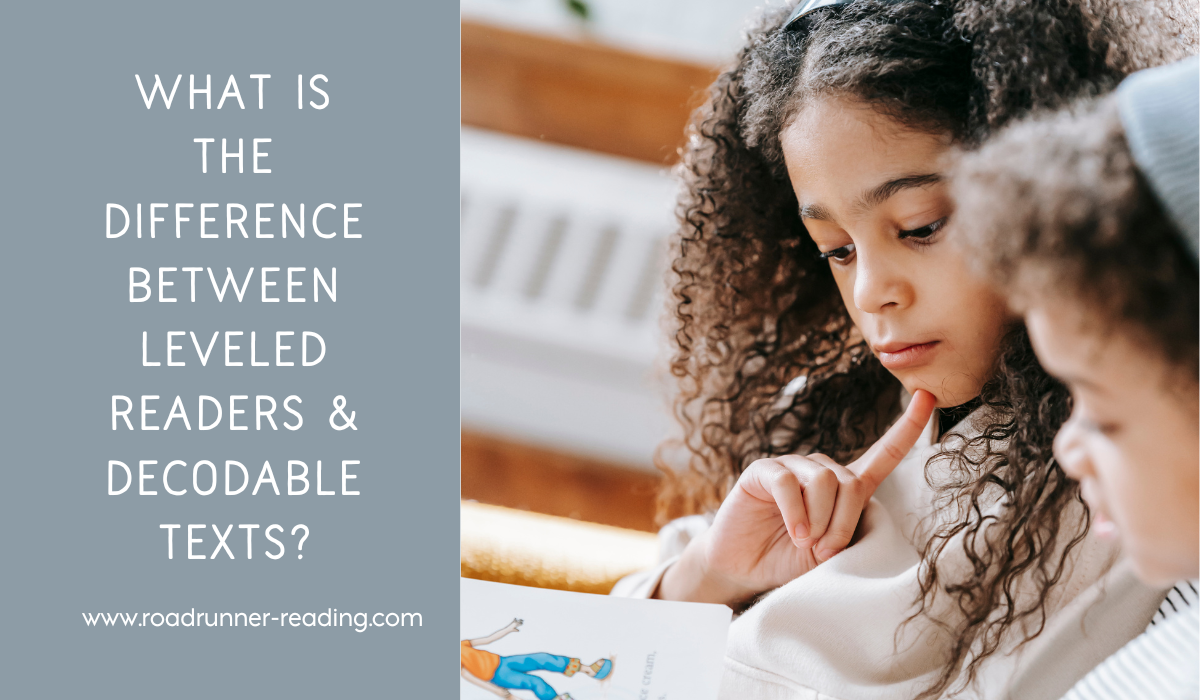
What is the difference between leveled texts and decodable texts? And more importantly, who would win in an arm wrestling match?!
Decodable texts are usually short passages containing only the phonetic patterns the students have been taught. For example, if I have taught the vowel digraphs ai, oa, and ue, then the decodable text may contain the following sentence: The main boat is blue (given I also had taught the heart words, “the,” and “is”).
Leveled texts (or readers), according to teachhub.com are books characterized and categorized by the level of difficulty of the text. Based on a number of criteria, leveled books range from guided reading levels A-Z or DRA (developmental reading assessment) levels 1 to 70. Educators use diagnostic literacy tools measuring a child’s accuracy, fluency, and comprehension to determine the child’s three reading levels.
The Science of Reading encourages students to use decodable texts to build their phonics skills. Leveled texts are okay, though. More advanced readers can use them as tools to build up background knowledge (vocabulary) or used to practice phonics by having students hunt down words using the assigned phonetic pattern you are working on that week.
It’s important to remember, though, that students should have limited time with leveled texts if they are not proficient readers, as it can lead to the student feeling frustrated at not being able to decode unfamiliar words. Frustrated students can shut down altogether, leading to an aversion to reading or possibly a difficult behavioral situation on your hands (we’ve all been there!)
So, who would win in an arm wrestling match? When it comes to the Science of Reading — decodable texts, hands down!
The Reading League has a page dedicated to decodable text options — click here to check them out!
